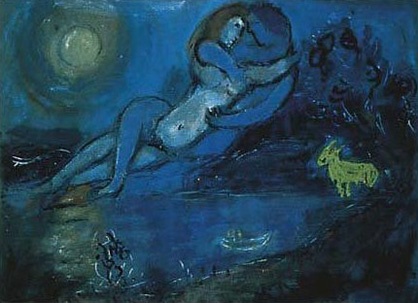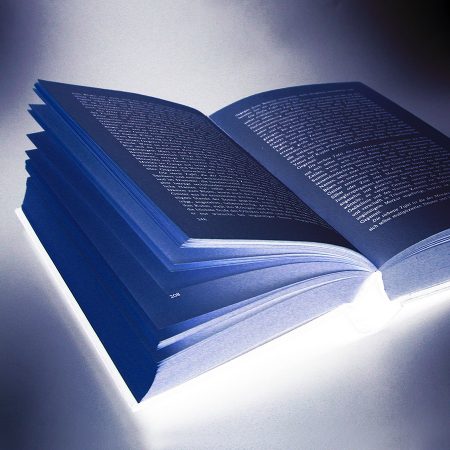The full moon and Marc Chagall

There are probably few painters who made use of the full moon in their paintings as often as Marc Chagall (1887–1985), the French artist of Russian-Jewish descent, who was regarded as »le poète« (the poet) amongst painters, due to his symbolic shapes and colors.
Chagall lived for almost a century and if one can classify his style at all, then it would have to be expressionism. He worked in Russia, France (primarily Paris) and in the US (primarily New York) and was on an inner and outer journey throughout his life.
Unlike with other artists of romanticism, like Caspar David Friedrich, or naturalism like Petrus van Schendel, whereby it was about illustrating the moonlight and its magic effect, Marc Chagall tried to grasp the Moon as a symbol and not as celestial body or source of light.

Often, it was about the encounter of two lovers, just like here as an example in the painting »Blue couple by the water« from 1954. The Moon can be seen as a green circle in the sky, simply painted, almost without a care in the world and creates an opposite pole to earthly existence, a spot where the souls of the protagonists can meet and deepen. The kind of portrayal of the Moon reminds of Paul Klee’s painting »The full moon« from 1919, where the Moon appears similarly dark and symbolic, far removed from material qualities.
Chagall enchants with shapes and colors, the full moon does this with its light, which appears to have an effect even when it is hardly visible …
